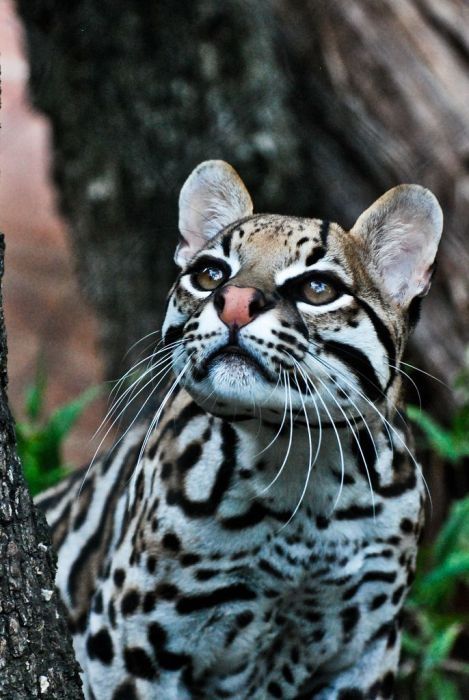|
|
Ocelot
|
The coat pattern of ocelots can vary, being anything from cream to reddish-brown in color, or sometimes grayish, and marked with black rosettes. In many individuals, some of the spots, especially on the back, blend together to form irregular curved stripes or bands. The fur is short, and paler than the rest of the coat beneath. There are also single white spots, called ocelli, on the backs of the ears. Two black stripes line both sides of the face, and the long tail is banded by black.
Behavior
The ocelot is mostly nocturnal and very territorial. It will fight fiercely, sometimes to the death, in territorial disputes. In addition, the cat marks its territory with urine. Like most felines, it is solitary, usually meeting only to mate. However, during the day it rests in trees or other dense foliage, and will occasionally share its spot with another ocelot of the same sex. Males occupy territories of 3.5 to 46 square kilometres (1.4 to 18 sq mi), while females occupy smaller, non-overlapping territories of 0.8 to 15 square kilometres (0.31 to 5.8 sq mi). Territories are marked by urine spraying and by leaving feces in prominent locations, sometimes favoring particular latrine sites.
|
|









